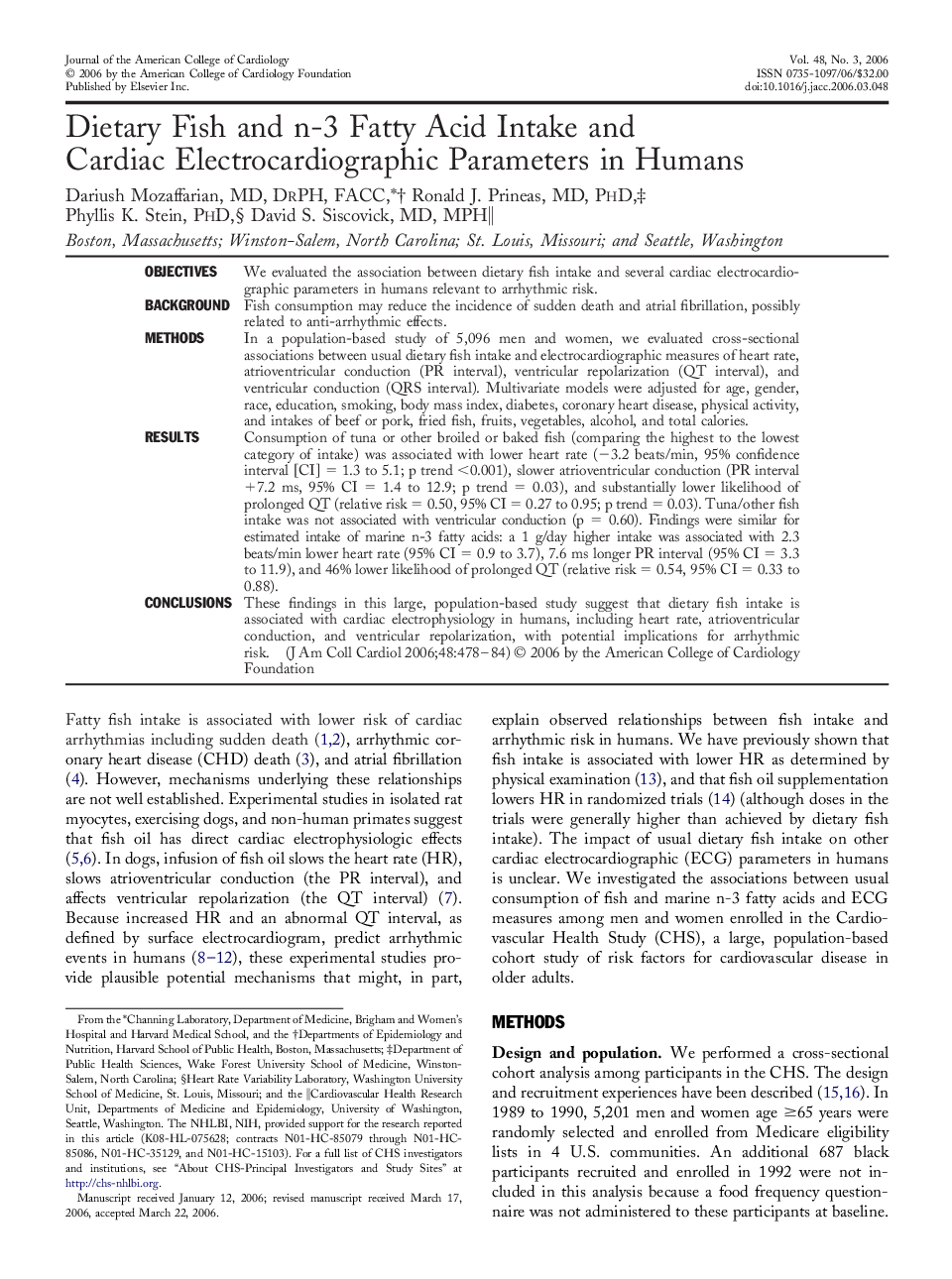| کد مقاله | کد نشریه | سال انتشار | مقاله انگلیسی | نسخه تمام متن |
|---|---|---|---|---|
| 2953768 | 1577506 | 2006 | 7 صفحه PDF | دانلود رایگان |

ObjectivesWe evaluated the association between dietary fish intake and several cardiac electrocardiographic parameters in humans relevant to arrhythmic risk.BackgroundFish consumption may reduce the incidence of sudden death and atrial fibrillation, possibly related to anti-arrhythmic effects.MethodsIn a population-based study of 5,096 men and women, we evaluated cross-sectional associations between usual dietary fish intake and electrocardiographic measures of heart rate, atrioventricular conduction (PR interval), ventricular repolarization (QT interval), and ventricular conduction (QRS interval). Multivariate models were adjusted for age, gender, race, education, smoking, body mass index, diabetes, coronary heart disease, physical activity, and intakes of beef or pork, fried fish, fruits, vegetables, alcohol, and total calories.ResultsConsumption of tuna or other broiled or baked fish (comparing the highest to the lowest category of intake) was associated with lower heart rate (−3.2 beats/min, 95% confidence interval [CI] = 1.3 to 5.1; p trend <0.001), slower atrioventricular conduction (PR interval +7.2 ms, 95% CI = 1.4 to 12.9; p trend = 0.03), and substantially lower likelihood of prolonged QT (relative risk = 0.50, 95% CI = 0.27 to 0.95; p trend = 0.03). Tuna/other fish intake was not associated with ventricular conduction (p = 0.60). Findings were similar for estimated intake of marine n-3 fatty acids: a 1 g/day higher intake was associated with 2.3 beats/min lower heart rate (95% CI = 0.9 to 3.7), 7.6 ms longer PR interval (95% CI = 3.3 to 11.9), and 46% lower likelihood of prolonged QT (relative risk = 0.54, 95% CI = 0.33 to 0.88).ConclusionsThese findings in this large, population-based study suggest that dietary fish intake is associated with cardiac electrophysiology in humans, including heart rate, atrioventricular conduction, and ventricular repolarization, with potential implications for arrhythmic risk.
Journal: Journal of the American College of Cardiology - Volume 48, Issue 3, 1 August 2006, Pages 478–484